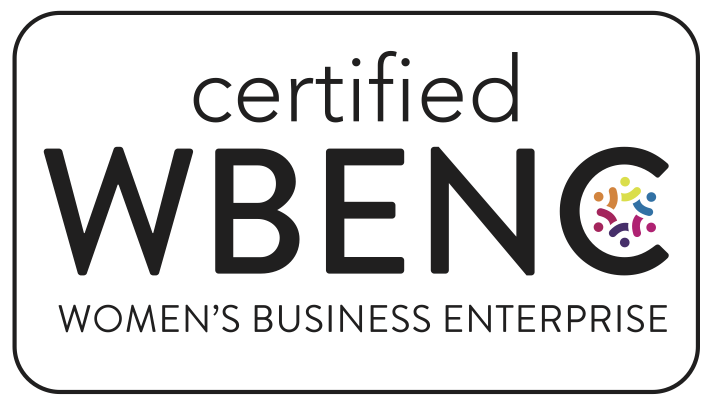Core values define a company’s beliefs and shape how it wants its employees to interact with people both within and outside the organization. They serve as its “highest priorities, deeply held beliefs, and core, fundamental driving forces.”1 In order to promote its core values, though, an organization must first define them.
The most impactful way to discover an organization’s core values is to examine how employees see themselves and their company. To be most successful, the process of determining core values must be a company-wide endeavor that solicits input from employees across all parts of the organization. Anaplan, for example, uses a five-step series of facilitated workshops to collect “both input and buy-in from employees across all departments, locations, and levels.”2 This “bottom-up approach” starts by broadly asking employees "What is important at our company and what is unique about working here?” Through discussion and evaluation, this broad list of responses is then narrowed down to a set of well-defined core values.
Any method a company uses to determine its corporate values should incorporate three key elements:
- A compelling story about the long-term future. Often called a “vision statement,” this lays out where the company wants to go and what it wants to be.
- A plan for creating that future. This thumbnail sketch of why the company exists and what it does is often referred to as a “mission statement.”
- A set of actions and behaviors that will guide the company to that future. These are often called “organizational values,” “company values,” or “core values.” They include the fundamental beliefs held by the organization’s most engaged employees and declare how it will treat customers, suppliers, community members, and employees.
Core values should function as an “at-a-glance guide” to the company’s culture, representing the best and strongest elements of that culture.
To determine whether the values it’s formulated will be meaningful and effective in guiding its culture, a company should ask these questions:
- How much do our values represent our current corporate culture?
- Are they aspirational? (That is, do they reflect what we want our company to be?)
- Are they unique to our organization?
Strong values are memorable, but not overly clever. Perhaps most important, they should be specific.
Organizations should avoid broad values (such as “integrity” or “innovation”) that tend to be too vague to have any real meaning for employees. When it’s necessary to use such values, companies should be sure to explain them thoroughly. For example, Netflix states that one of its “valued behaviors” is “curiosity,” and presents a detailed explanation of what that means:
- You learn rapidly and eagerly.
- You seek alternate perspectives to improve your ideas.
- You see patterns and connections that other people miss.
- You seek to understand members’ changing tastes and desires.3
Finally, it should be clear to everyone in the organization how to put company values into action. If the values are too abstract, employees will struggle to “connect the dots” to translate them to real-life behaviors.
Because strong, meaningful company values are deeply rooted in the organization’s culture, they should not be changed on a whim but, rather, should endure and stand the test of time. When a company stays the course with its values, even during difficult times, they become a reference point within the organization.
Putting Core Values in Action
Once a company has defined its core values, how does it bring them to life? How does it infuse them into the lifeblood of the organization’s culture? How does it ensure that they guide and inform everyone throughout the company?
Taking as a starting point that fact that “an organization’s core values only have power when—and to the extent that—the humans in and around the organization feel a connection to them,”4 companies should be sure that their core values include three key characteristics that foster connections:
- Values must be operationalized. Organizations must design and create systems that ensure that values are viewed as integral to everyday business processes and decision making.
- Values must be lived—starting at the top. Because of leaders’ visibility and position of authority, it’s vital that they “live an organization’s core values, even in (or especially in) the smallest of actions, or the values have no teeth.”5
- Values must be communicated. One great way to do this is through stories told by employees who embody the company’s core values.
Of course, one of the most effective ways to get company values off the wall and to make them part of the organization’s DNA is to implement a values-based employee recognition program. A vibrant, comprehensive program plays an integral role in aligning the entire organization to its shared purpose and vision. Recognition reinforces company values and puts the power of gratitude to work, aligning everyone in the organization to its core values. Because a values-based employee recognition program is designed with rewards that map to each of the company’s values, it integrates those ideals into employees’ everyday thoughts and actions.
Linking Employees to Company Values
In the end, corporate values are the foundational cornerstone of a company’s brand. They reflect what the organization is and what it believes in. In this way, they become a portrait of the organization’s community and showcase the employee connections that make the company what it is.
1 Darcy Jacobsen. 2012. “Get Your Values off the Wall (Part 3 of 3).” Workhuman blog, November 4, www.workhuman.com/resources/globoforce-blog/get-your-values-off-the-wall-3-of-3.
2 Frank Calderoni. 2021. “5 Steps to Discover Your Organization's Core Values.” SHRM website, August 3, www.shrm.org/executive/resources/articles/pages/discover-org-core-values-calderoni.aspx.
3 Netflix. Undated. “Netflix Culture—Seeking Excellence.” jobs.netflix.com/culture.
4 Scott Thompson. 2018. “When Human Values and Organizational Values Overlap.” Workhuman blog, July 24, www.workhuman.com/resources/globoforce-blog/human-values-and-organizational-values.
5 Ibid.

